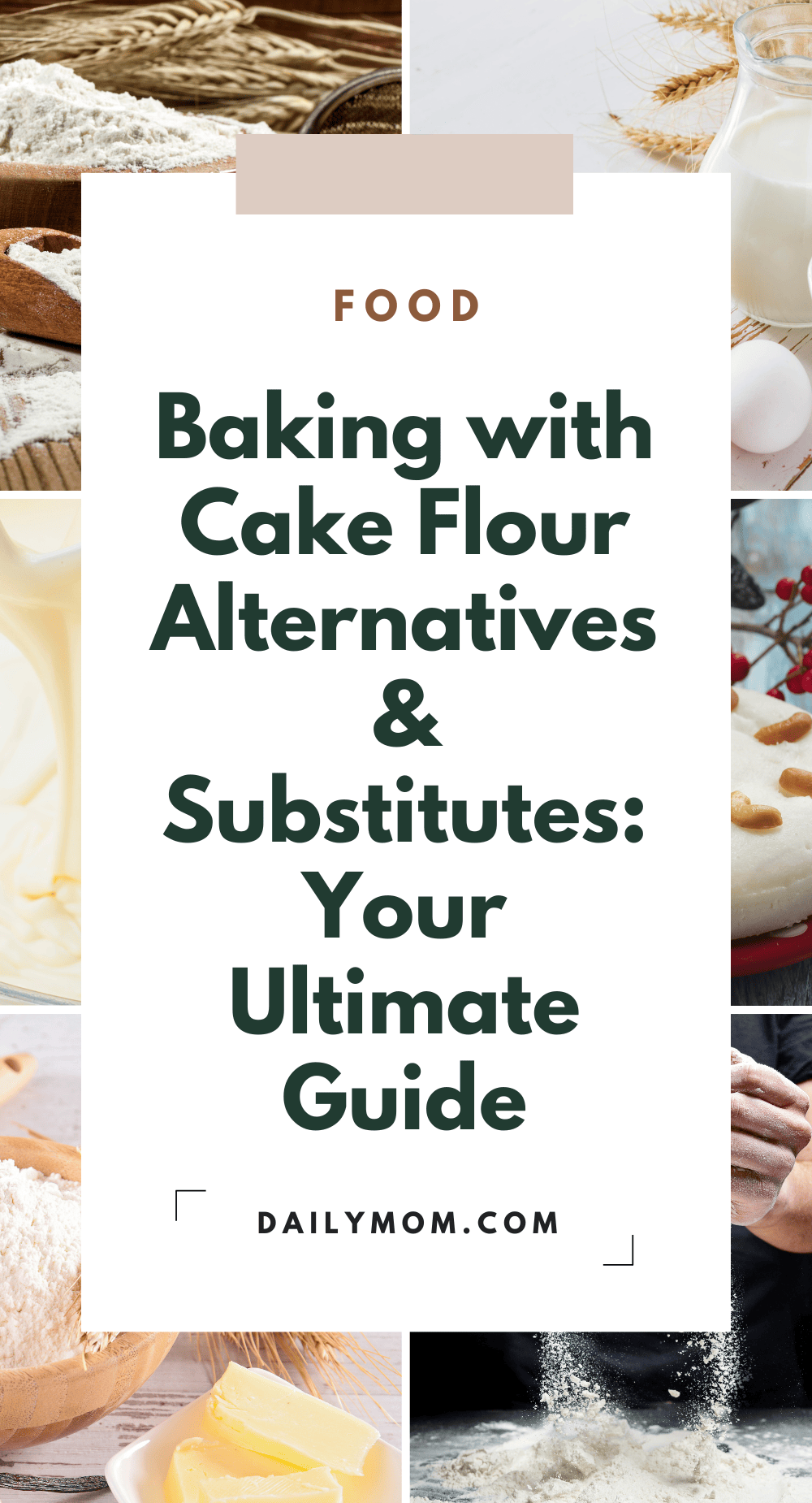Are you out of cake flour but still craving a delicious homemade cake? It’s time to unveil the most suitable cake flour substitute options that you can use to achieve the same light and fluffy texture in your baked goods. Whether you’re short on time or ingredients, don’t fret just yet. With a range of alternatives such as all-purpose flour, cornstarch, and even a simple homemade cake flour recipe your sweet tooth will be satisfied in no time. Discover the secrets to creating perfect cakes without having to make a trip to the grocery store.
Unveiling the Best Cake Flour Substitute or Simply Make Cake Flour for Your Baked Goods
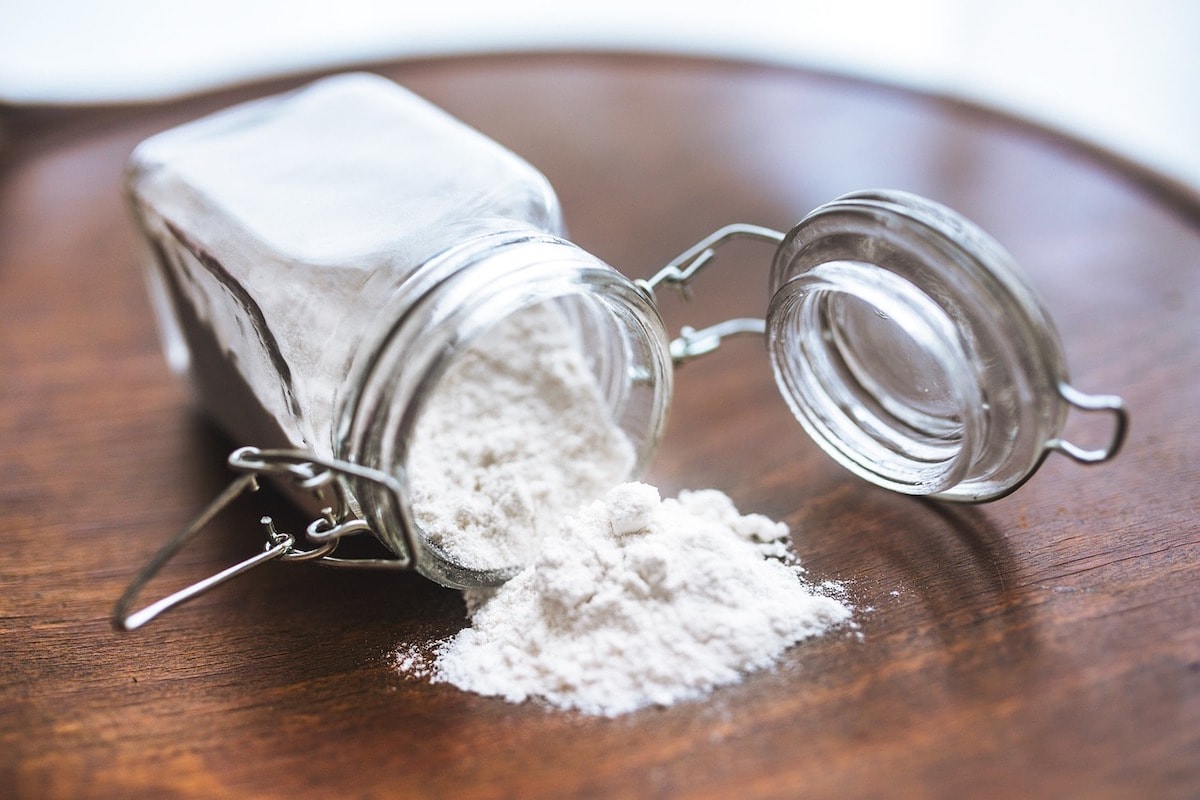
All-purpose Flour and Cake Flour: Understanding the Difference
All-purpose flour and cake flour are two commonly used kinds of flour in baking, but they have distinct differences that can affect the outcome of your baked goods. Readily available, all-purpose flour in the pantry, is a versatile flour that can be used in a variety of recipes, from bread to cakes. It has a moderate protein content, typically around 10-12%, which gives baked goods a good structure and texture. On the other hand, cake flour has a lower protein content, around 8%, which results in a lighter and more tender texture. It is ideal for delicate cakes and pastries.
The difference in protein content affects the gluten development in the dough or batter and ultimately the final texture of the baked goods. So, understanding the difference between all-purpose flour and cake flour is important for achieving the desired results in your baking endeavors.
Use All-purpose Flour as a Substitute for Cake Flour
You can definitely bake with all-purpose flour as a substitute for cake flour, but there are a few things to keep in mind. As we mentioned, cake flour has a lower protein content than all-purpose flour, which gives cakes a tender and delicate texture. One way to quickly mimic cake flour is to replace one cup of cake flour with one cup minus two tablespoons of all-purpose flour.
Don’t stop there, however, let’s dive deeper into alternatives for cake flour than just reducing the amount. It’s important to note that the substitution may affect the final texture and rise of the cake, so it’s best to use cake flour your recipe calls for it, yet, if you are in a pinch there are ways to get around it.
Quick Guide to Using All-purpose Flour as a Cake Flour Substitute
When baking with all-purpose flour as a cake flour substitute, there are a few key aspects to consider that revolve around their compositions. Since all-purpose flour has a higher protein content, it can yield a denser and less tender product compared to cake flour. To counteract this, you’ll need to treat your all-purpose flour to make it act more like cake flour.
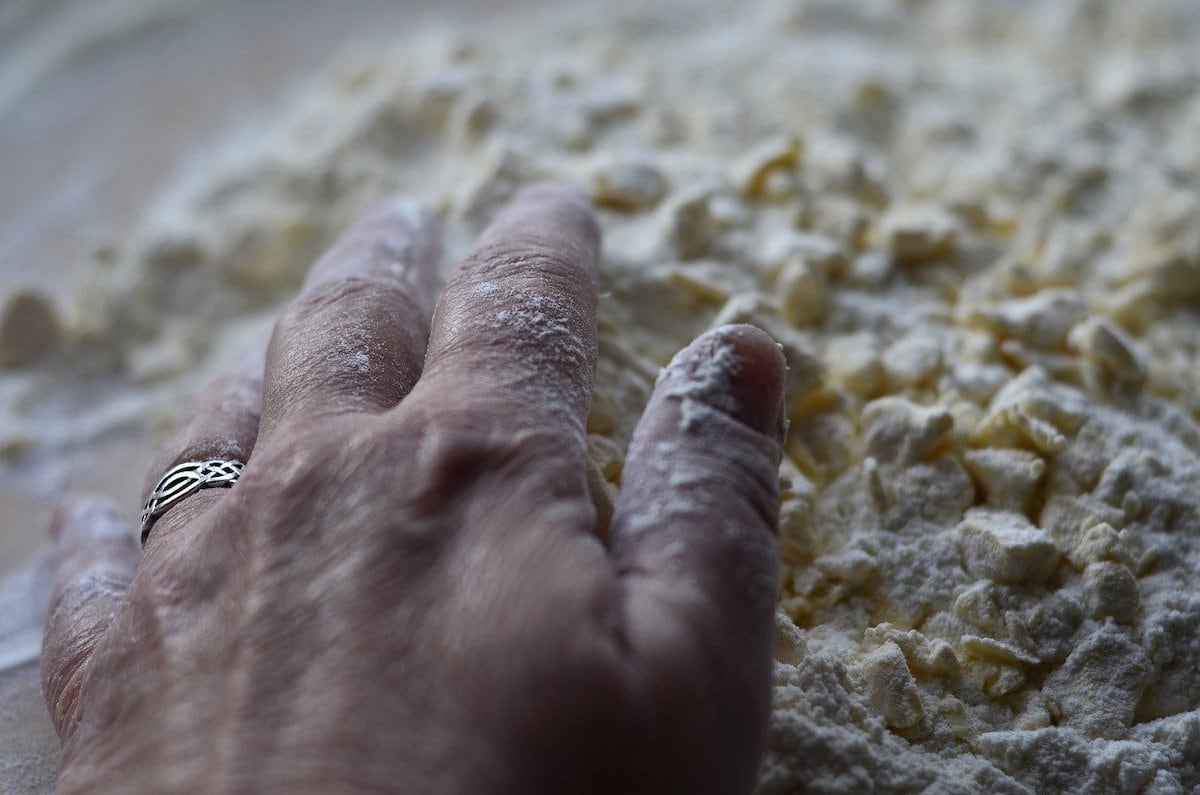
Start by measuring out the amount of all-purpose flour that your recipe requires for cake flour. Then, for each cup of all-purpose flour, remove two tablespoons. This is because all-purpose flour is denser and we want to lighten it up a bit.
Next, add two tablespoons of cornstarch to your all-purpose flour. It’s a fine, powdery ingredient that can help reduce the protein content in your all-purpose flour, mimicking the low protein content of cake flour that creates that soft and light texture. For every cup of all-purpose flour, consider adding 2 Tbs of cornstarch.
Remember to sift the flour mixture multiple times to ensure that it is well incorporated and airy. This step also helps to break down the all-purpose flour, making it finer and more similar to cake flour.
Finally, be mindful of the mixing process. When you have all-purpose flour rather than cake flour, it’s best to avoid over-mixing as it can develop more gluten and result in a tougher cake.
Keep in mind that while these steps help make all-purpose flour behave more like cake flour, the texture and taste of your cake might still be slightly different from a cake made with cake flour. But in a pinch, this trick should do just fine!
Understanding the Adjustments When Using All-purpose Flour
When you only have all-purpose flour as a substitute for cake flour, there are a few adjustments you can make to ensure the best results.
- For a lighter texture: Sift the flour multiple times and be mindful of the mixing process to avoid developing too much gluten.
- For added tenderness: Consider only adding cornstarch to your all-purpose flour.
- For enhanced flavor: Add a small amount of vanilla extract or almond extract to the batter. These extracts can help enhance the flavor of your cake, making it taste more like a cake made with cake flour.
- For improved moisture and texture: Consider adding an extra egg yolk to the batter. The additional fat in the egg yolk can help create a moister and more tender cake.
Does All-purpose Flour Work in Recipes that Calls for Cake Flour?
Short answer: Yes, all-purpose flour can be used in those recipes with the proper adjustments. As mentioned earlier, reducing the amount of all-purpose flour and adding cornstarch are key steps to mimic the low protein content of cake flour.
However, do keep in mind that cooking with all-purpose flour may affect the texture and rise of your baked goods. It’s always best to use the specified flour noted in the recipe for optimal results, but in a pinch, as most of us are, all-purpose flour can be a viable substitute.
How to Bake with All-purpose Flour Without Sacrificing the Cake’s Quality
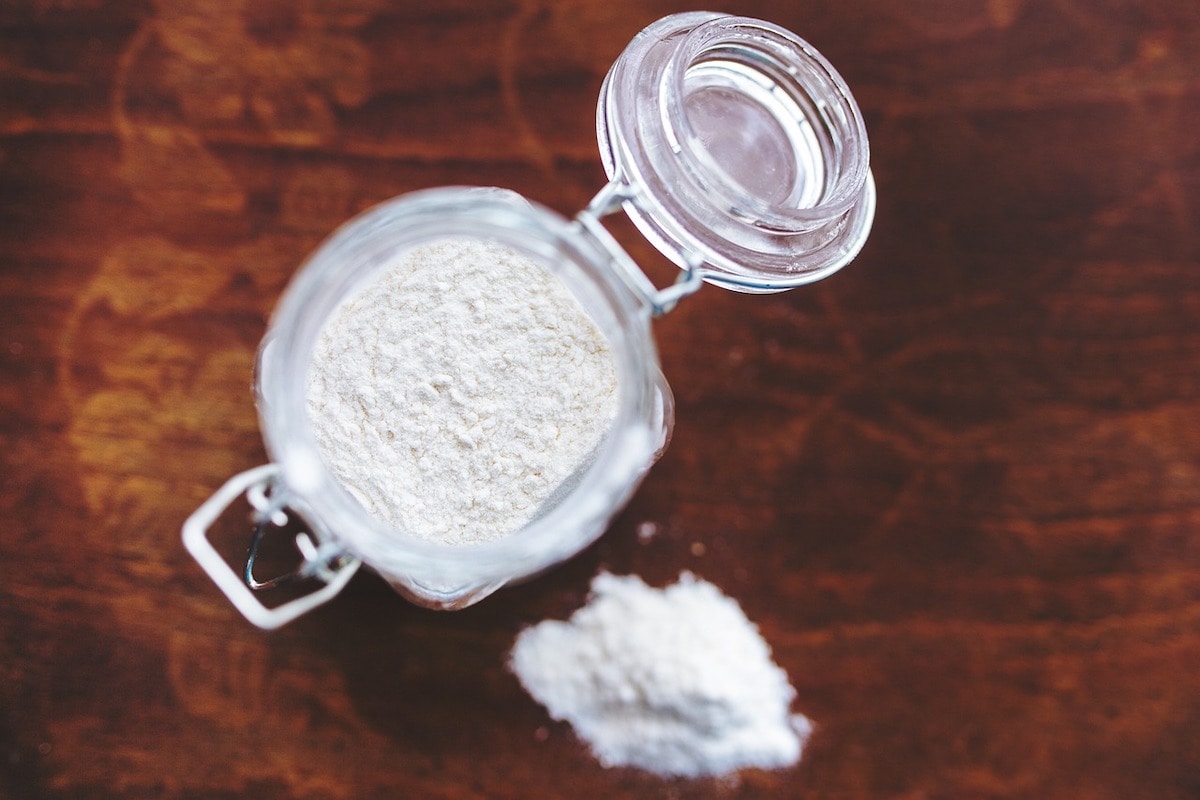
The secret to baking with all-purpose flour without sacrificing your cake’s quality lies in the adjustments you make when substituting for cake flour. By following the tips and tricks mentioned above, such as sifting the flour multiple times and adding a touch of flavor with vanilla extract or almond extract, you can create a delicious cake that is just as good as one made with cake flour.
In a nutshell, yes, all-purpose flour can be used as a substitute for cake flour with proper adjustments. However, for the best results and to achieve the desired texture and rise, it’s always recommended to use the kind of flour specified in the recipe. With this knowledge in hand, you can confidently tackle any recipe that calls for cake flour or make your own homemade version when in a pinch. Overall, understanding the differences between flours and their properties is key to becoming a successful baker.
Do’s and Don’ts When Baking with All-purpose Flour as a 1 for 1 Cake Flour Substitute
When you need to bake with all-purpose flour as a 1 cup for 1 cup cake flour substitute, there are several do’s and don’ts to keep in mind. First, measure the all-purpose flour accurately to ensure the right texture and consistency. Sift the flour to remove any clumps and aerate it before measuring. Additionally, do consider adding cornstarch to mimic the lower protein content of cake flour. For every cup of all-purpose flour, remove 2 tablespoons and replace them with 2 tablespoons (tbs) of cornstarch. On the other hand, don’t overmix the batter as it can lead to a denser and tougher cake.
Also, avoid using straight all-purpose flour as a substitute for recipes that specifically list cake flour, as the textures may significantly differ. For quick reference, the do’s and don’ts, copy the list below:
- Do measure the all-purpose flour accurately using a scale or spoon and level method.
- Do sift the all-purpose flour to remove any lumps or impurities.
- Don’t use cup for cup to substitute for cake flour.
- Do adjust the recipe slightly, reducing the amount of all-purpose flour by 2 tablespoons for every cup used.
- Don’t overmix the batter to avoid developing excess gluten.
- Don’t expect the exact same texture and crumb as utilizing cake flour.
- Don’t bake with all-purpose flour as a substitute for cake flour in delicate cakes or recipes that specifically list cake flour.
Understand the Role of Cake Flour Substitutes in Baking
Cake flour is a special kind of flour made from soft wheat grains. It is finely ground and treated with chlorine gas or potassium carbonate to make it less acidic. This unique process reduces the gluten, which is a protein, in the flour. The result is a flour with less protein, which gives baked goods made with cake flour a soft and tender texture. Now that you understand how cake flour is made, it’s easier to see why substitutions are necessary when it comes to baking with all-purpose flour.

Understanding the role of cake flour substitutes in baking is important for achieving the desired results in your baked goods. As mentioned earlier, cake flour has a lower protein content compared to all-purpose flour, which creates a softer and more delicate texture in cakes. When using a substitute, such as adding cornstarch or sifting the all-purpose flour multiple times, the aim is to mimic the properties of cake flour. By adjusting the protein content and texture, you can create a similar result. However, keep in mind that even with substitutes, there may be slight differences in taste and texture, so it’s always best to use the recommended flour for optimal results.
Can Cake Flour Substitute for All Purpose in Baking?
While all-purpose flour can be substituted for cake flour, the reverse is not true. Cake flour cannot replace all-purpose flour in baking recipes as it has a lower protein content and may affect the structure and rise of baked goods such as bread or cookies. Additionally, cake flour has been treated with chemicals to further reduce its protein content, which may alter the taste and texture of the final product.
If a recipe calls for all-purpose flour and you only have cake flour on hand, there are a few ways to make the substitution work. The most important thing to keep in mind is that cake flour is largely more finely milled than all-purpose flour, so using the same amount of cake flour as all-purpose may result in different textures, a softer dough, and possibly, more crumbly cookies, for example. For the most part, yes, you can substitute cake flour for all purpose flour, but be forewarned, the results will be different than expected – not necessarily a bad thing.
Understanding the Role of Cake Flour in Baked Goods
Cake flour is made from soft wheat and has a lower protein content, usually around 8%, compared to all-purpose flour which typically contains around 10-12% protein. This lower protein content is what causes cake flour to be great for creating tender, fine-textured cakes, cookies, and pastries. The lower amount of gluten in cake flour also allows for more air pockets to form while baking, resulting in a lighter and fluffier end product. Additionally, the bleaching process used on cake flour helps to produce a whiter baked good, perfect for creating beautiful cakes or delicate pastries.
So when a recipe calls for cake flour, it’s because the desired end result is a soft, tender, and light (and sometimes, crumbly) texture.
How Does Substituting Cake Flour Affect the Baked Product?
As mentioned before, you can use your cake flour for all-purpose flour may result in a different texture and possibly flavor of the baked good. However, it can still be done with some adjustments. For example, if you want cake flour in place of all-purpose flour in a cookie recipe, slightly increasing the amount of butter or fat used can help compensate for the lack of structure provided by the lower protein content in cake flour. Additionally, adding an extra egg or using a combination of cake flour and all-purpose flour can also help achieve a closer result to all-purpose flour.
It’s important to note that when substituting cake flour for all-purpose flour, it may take some trial and error to get the perfect texture and taste. It’s always best to experiment and adjust the recipe accordingly to achieve the desired result.
While cake flour can be used as a substitute for all-purpose flour in baking, it may require some adjustments to achieve the same texture and flavor. When baking with cake flour in place of all-purpose flour, keep in mind its lower protein content and make necessary changes to compensate.
How to Substitute Cake Flour for All Purpose?
Here are some quick tips:
- Use 1 cup of cake flour for every 1 cup of all-purpose flour required in the recipe.
- For a lighter and fluffier texture, you can also use a mixture of cake flour and all-purpose flour such as 3/4 cup cake flour and 1/4 cup all-purpose flour.
- Add an extra egg or increase the amount of fat (butter, oil, etc.) in the recipe to help provide structure.
- When substituting cake flour for all-purpose flour in cookies or bread recipes, slightly increase the amount of liquid used to avoid a dry end product.
- To achieve a whiter color in baked goods, you can also add 1-2 Tbs of cornstarch for every one cup of all-purpose flour being replaced with cake flour.
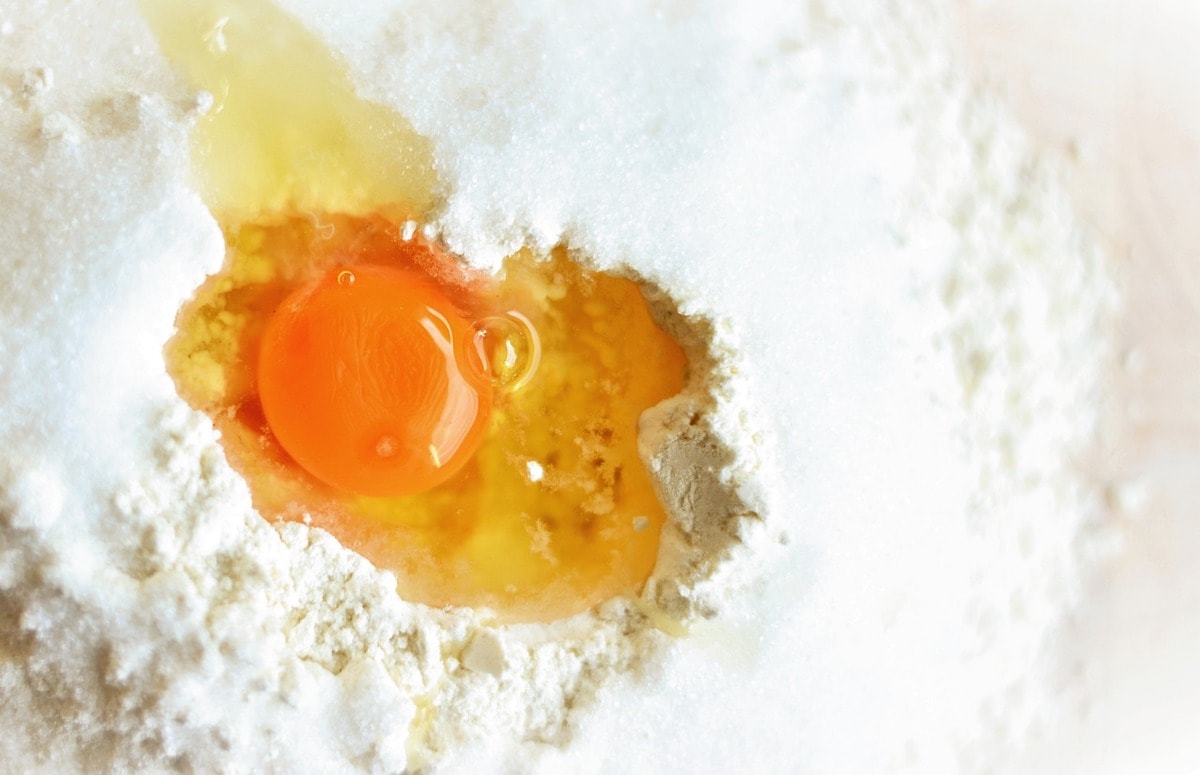
By following these suggestions, you can successfully substitute cake flour for all-purpose flour in your baking recipes and still achieve delicious results. With some experimentation and adjustments, you may even create a new and unique twist on a classic recipe! So don’t be afraid to try cake flour in place of all-purpose flour, and discover the possibilities it may bring to your baked goods. Remember, baking is a science and experimentation is the key to creating new and delicious creations.
Recipes Requiring Cake Flour and Their Alternatives
Some classic recipes that require cake flour are:
- Angel food cake
- Sponge cake
- Chiffon cake
- Red velvet cake
- Yellow cake
If you are unable to find or have run out of cake flour, here are some alternatives for common baked goods:
- For angel food cake: use one cup of all-purpose flour plus 2 tablespoons cornstarch for every one cup of cake flour.
- For sponge or chiffon cakes: use one cup of all-purpose flour plus 2 tbs of cornstarch for every one cup of cake flour.
- For red velvet or yellow cake: use one cup of all-purpose flour plus 2 teaspoons of baking powder for every one cup of cake flour.
With these simple substitutions, you can still enjoy your favorite cakes and pastries even without cake flour on hand. Just remember to make necessary adjustments for the differences in protein content and texture, and you’ll be creating delicious baked goods in no time.
Understanding the Flour and Cornstarch Blend Technique
The addition of cornstarch helps to further reduce the protein content, creating an even lighter texture in the end product. This blend technique is commonly used when all-purpose flour is the only option available, but a softer and more delicate result is desired.
To make this substitute, simply mix one cup of all-purpose flour with 2 tbs of cornstarch for a cup of cake flour required in the recipe. Sift the mixture together to ensure a uniform blend before using in your recipe.
By understanding the science behind flour and its protein content, you can confidently make substitutions and adjustments in your baking recipes without fear of ruining the final product.
What are the Best Cake Flour Alternatives & Best Cake Flour Substitutes?
A few alternatives to cake flour include:
- Pastry Flour: With a protein content of around 9%, a bag of pastry flour is similar to cake flour in terms of texture and is a great substitute.
- All-Purpose Flour: As mentioned earlier, all-purpose flour can be used with some adjustments to achieve a similar result as cooking with cake flour.
- Self-Rising Flour: This flour already contains a rising agent and salt, so it’s a convenient alternative for making quick breads or pancakes.
- Cornstarch: Adding 2 tbs of cornstarch to every cup of all-purpose flour can also help achieve a similar texture to cake flour.

Of course, the best substitute for cake flour will depend on the specific recipe and desired end result. It’s always recommended to experiment and make adjustments as needed to achieve the best outcome for your baked goods.
Oat Flour, Pastry Flour, Coconut Flour, Bread Flour, Self-rising Flour and Almond Flour as Cake Flour Substitutes
Aside from the alternatives mentioned above, if you don’t have a box of cake flour handy, there are also a few other types of flour that can be used as substitutes for every cup of cake flour. These include:
- Oat Flour: Ground oats can be used as a gluten-free alternative to cake flour. For every a of cake flour, use 1 cup of oat flour and add an extra 1-2 tablespoons to achieve a smoother texture.
- Coconut Flour: Another gluten-free option, coconut flour has a higher protein content than cake flour but can still be used as a substitute with some adjustments. For a cup of cake flour, use 1/3 cup of coconut flour and add an extra egg or liquid to help with the texture.
- Bread Flour: With a higher protein content than all-purpose flour, it can also be used in place of cake flour with some adjustments. For a cup of cake flour, use one cup of bread flour and add an extra egg or liquid to help with the texture.
- Self-Rising Flour: This common type of flour already contains a rising agent and salt, making it a quick alternative. For a cup of cake flour, use 1 cup of self-rising flour and omit any salts or rising agents.
- Almond Flour: Ground almonds can be used as a gluten-free substitute for cake flour, but it may alter the taste and texture of the end product. For a cup of cake flour, use 1 cup of almond flour and add an extra egg or liquid to help with the texture.
Overall, there are various alternatives and substitutes for cake flour that can be used in baking. Each one may require some experimentation, but they all have the potential to create delicious baked goods. Just don’t forget, when using these alternative flours, make sure to research their protein content and make necessary adjustments to maintain the structure and texture of your baked goods.
No Cake Flour Substitute? Here’s What You Can Do
If you find yourself in a situation where you don’t have any of the suggested cake flour substitutes on hand, don’t worry! There are still some options available to you to achieve a similar result. Opt to make your own cake flour mix. You can make it with beneficial flours to not only enhance texture and flavors, but you can make it Paleo, Keto, or vegan-friendly.
Top 5 Best Substitutes for Cake Flour from Amazon
Looking for a quick and easy solution? Here are the top 5 substitutes for cake flour that you can find on Amazon:
- Bob’s Red Mill Super-Fine Cake Flour: This pre-made mix contains unbleached cake flour, making it a convenient substitute for your baking needs.
- Namaste Foods Gluten-Free Perfect Flour Blend: This all-purpose flour can also be used as a substitute for cake flour with some adjustments.
- King Arthur Flour Gluten-Free Measure for Measure Flour: Another gluten-free option, this blend can easily replace cake flour in recipes with its similar protein content and texture.
- Pamela’s Products All-Purpose Flour Artisan Blend: This all-purpose gluten free flour is made from a blend of rice and tapioca flours, making it a suitable substitute for cake flour.
- Arrowhead Mills Organic Oat Flour: This oat flour can be used as an alternative to cake flour with some adjustments to achieve a similar texture and structure.
While cake flour may be the preferred choice for certain recipes, there are plenty of alternatives and substitutes available that can still produce delicious baked goods. Whether you choose to make your own cake flour mix or opt for a pre-made blend, don’t be afraid to experiment and find the best substitute that works for you and your dietary needs or preferences.
How Can I Make My Own Easy Cake Flour?
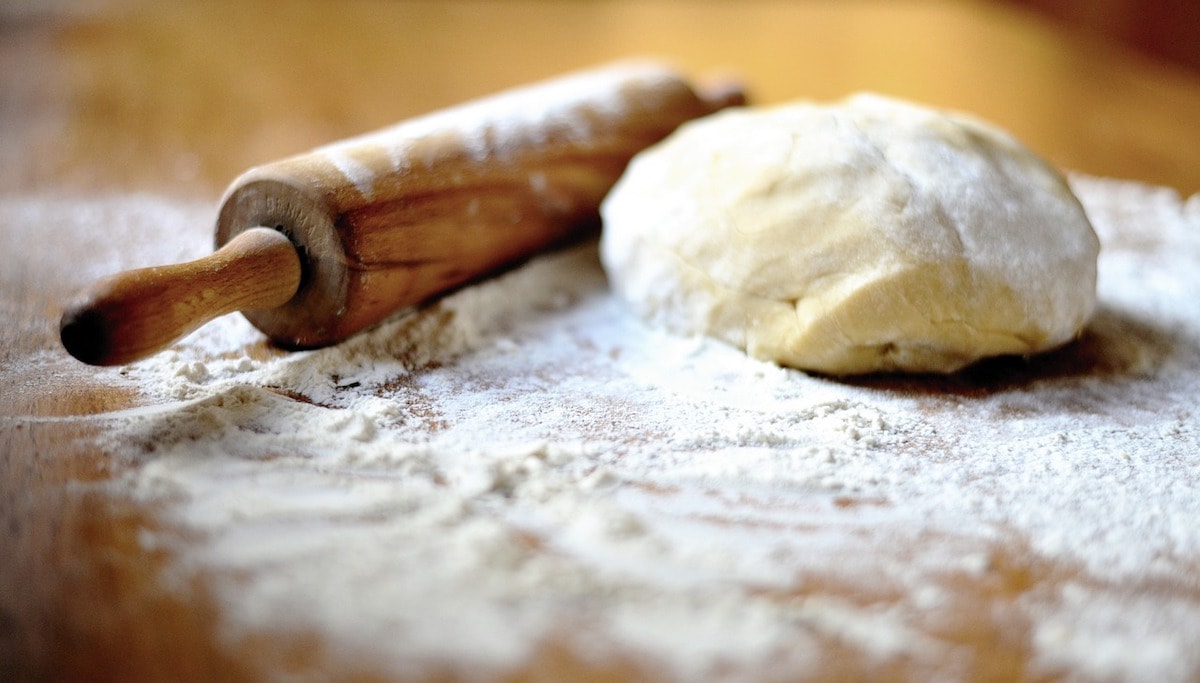
There are several ways you can make your own rendition of the generic cake flour blend. You can use whatever you have on hand or create a specialty blend to account for any food allergies or sensitivities. Additionally, you can pre-flavor your specialty blend to create a unique flavor profile and texture to your baked goods that have cake flour listed within the recipe.
Creating a Homemade Cake Flour Substitute
Making your own cake flour substitute can be a simple and cost-effective option for those who don’t have access to or prefer not to use pre-made mixes. With just a few basic ingredients, you can create a substitute that fits your dietary needs and still produces delicious results.
However, it’s important to note that homemade substitutes may not always yield the exact same texture as store-bought cake flour, so some experimentation and adjustments may be necessary. But don’t let that discourage you – with these tips and recipes, you’ll be well on your way to creating the perfect homemade cake flour substitute!
If you prefer to make your own cake flour at home, it’s a simple process that only requires two ingredients: all-purpose flour and cornstarch. Here’s a quick recipe for homemade cake flour:
Ingredients:
- 1 Cup all-purpose flour
- 2 Tbd of cornstarch
Instructions:
- Measure out 1 cup of all-purpose flour and remove 2 tablespoons of the flour.
- Add 2 Tbs of cornstarch to the remaining flour and sift together until well combined.
Use this homemade cake flour mixture in place of one cup of cake flour in your recipe, making any necessary adjustments to achieve the desired texture and structure of your baked goods.
Here are 5 More Homemade Cake Flour Recipes to Try:
- Homemade Self-Rising Cake Flour: Mix together 7/8 cup all-purpose flour, 2 tbs of cornstarch, and 1 teaspoon of baking powder for a self-rising cake flour substitute.
- Gluten-Free Cake Flour Mix: Combine 2 cups of white rice flour, 2/3 cup potato starch, 1/3 cup tapioca flour, and 1 teaspoon xanthan gum for a gluten-free cake flour mix.
- Whole Wheat Cake Flour Mix: Mix together 1 cup of whole wheat pastry flour, 2 tbs of cornstarch, and 2 teaspoons of baking powder for a healthier alternative to traditional cake flour.
- Paleo Cake Flour Mix: Combine 1/2 cup (nut flour, like almond), 1/4 cup coconut flour, and 1/4 cup arrowroot flour for a Paleo-friendly cake flour mix.
- Keto Cake Flour Mix: Mix 3/4 cup (nut flour, like almond), 2 tablespoons of coconut flour, and 1 tablespoon of xanthan gum for a low-carb, keto-friendly cake flour.
TIP: If you add in psyllium husk powder or xanthan gum to your cake flour recipes, you may achieve a lighter and fluffier texture in your baked goods.
No matter which substitute or alternative you choose, remember to always adjust the recipe accordingly to ensure the best results. With these flour substitutes, you can customize the ingredients to fit your dietary needs or preferences while still achieving great results in your baked goods. Be mindful of the protein content so you have an idea of how the texture will turn out in the final product. Review our tips above as well about specific flours.
So, next time you’re faced with a recipe calling for cake flour, don’t hesitate to try one of these substitutes or make your own at home. So go ahead and experiment with different flours, find the best substitute for you and enjoy delicious baked goods without the need for a generic cake flour!
Practical Tips to Consider When Making Your Own Substitutes for Cake Flour that Will Soon Become Your Best Substitutes for Cake Flour
- Always sift your flour mixtures to ensure it is well combined and eliminate any remaining lumps.
- When using a pre-made cake flour substitute, make sure to follow the recommended measurement conversions for best results.
- Don’t be afraid to experiment with different blends and ratios to find the perfect substitute for your needs.
- Keep in mind that gluten-free and low-carb options may require additional ingredients such as xanthan gum or psyllium husk powder for the best texture.
- Pay attention to the protein content of your chosen substitute, as it can greatly impact the structure and texture of your baked goods.
- Always make adjustments to recipes when using a substitute, as different flours may absorb or require different amounts of moisture.
With these tips and recipes in mind, you can confidently use substitutes for cake flour in your baking and still achieve delicious results. Don’t be afraid to try something new and experiment with different ingredients – who knows, you may just discover a new favorite!
A Step-by-step Guide to Making Cake Flour at Home
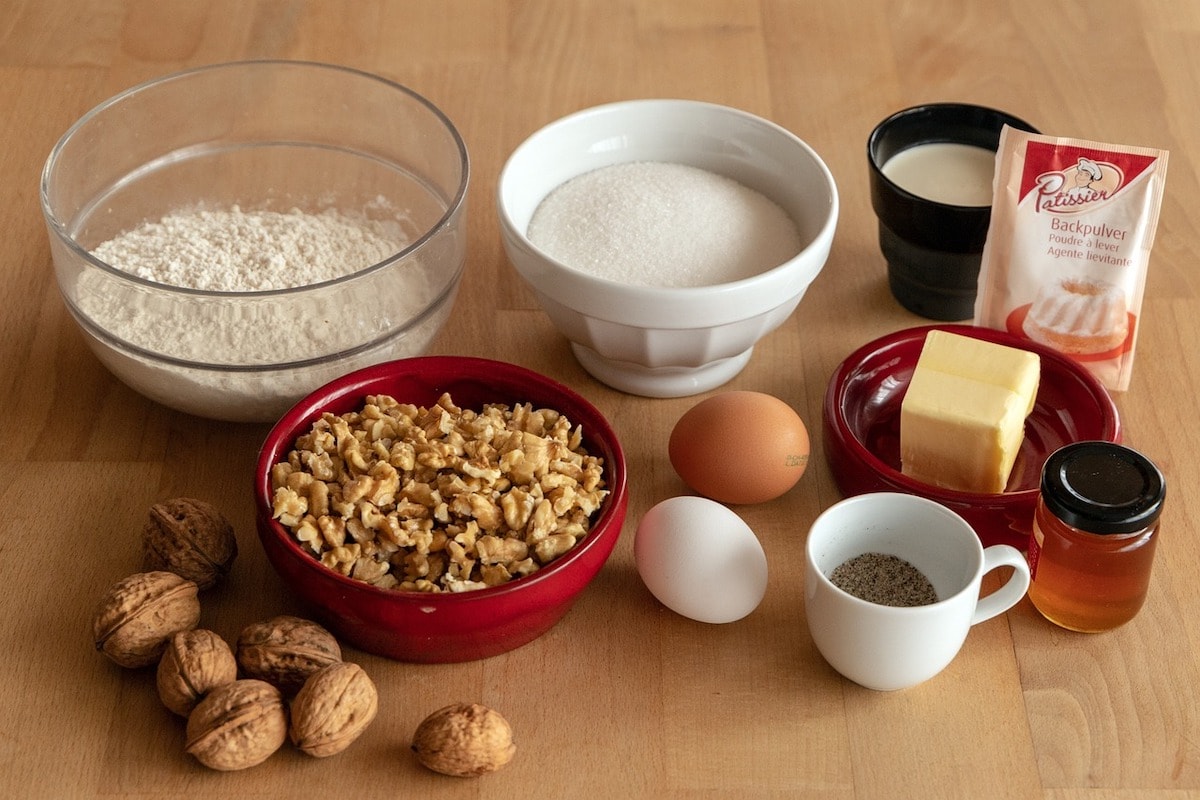
Making your own cake flour at home is a quick and easy process. First, check to see if you have alternative flours on hand and if you have some that we listed above. Start with a clean kitchen and work area. The following step-by-step instructions will guide you through the process:
- Gather all necessary ingredients and tools: You will need the flour of choice, cornstarch, a sifter or fine-mesh strainer, and measuring cups.
- Measure out specified cups of chosen flours/powders: Use a measuring cup to scoop out the desired amount and level off the flour with the back of a butter knife.
- Add additional ingredients the same way.
- Sift together: Sift the flours and powders using a sifter or fine-mesh strainer. This will ensure that all the ingredients are well combined and smooth out any lumps.
- Use in place of one cup of cake flour: Use your custom cake flour mixture in your recipe, making any necessary adjustments for texture and structure.
Looking for a gluten-free cake flour substitute?
You can easily use any of the recipes listed above to create a gluten-free version. Just be sure to double-check that all ingredients used are certified gluten-free and adjust the recipe as needed for your dietary needs.

The Best Gluten-free Flours to Substitute for Cake Flour
Some of the best gluten-free flours to use as substitutes for cake flour include:
- White Rice Flour: This is a common and versatile flour found in most grocery stores. It has a mild flavor and fine texture, making it a great choice for cakes.
- Nut Flour: Made from ground nuts, like almonds, this flour adds a nutty flavor and extra nutrients to your baked goods. Keep in mind that it is higher in fat, so it may require additional adjustments in recipes.
- Coconut Flour: Another gluten-free option made from ground coconut, this flour has a unique texture and adds a subtle coconut flavor to cakes.
- Tapioca Flour: Derived from the cassava plant, this flour is popular for its light texture and ability to help bind ingredients together. It has a neutral flavor, making it a great option for cakes.
- Potato Starch: Made from the starch of potatoes, this flour adds moisture and helps with binding in gluten-free recipes. It has a mild flavor and fine texture, making it a suitable substitute for cake flour.
When substituting gluten-free flours for cake flour, keep in mind that they may absorb moisture differently and may require additional ingredients such as xanthan gum or psyllium husk powder to achieve the desired texture.
How to Make Gluten-free Cake Flour at Home
To make a gluten-free version of cake flour at home, simply follow the same method as mentioned above for producing cake flour from scratch, using any of the gluten-free flours listed instead. Adjust the amount of cornstarch used depending on the type and absorbency of your chosen flour.
Coconut and Oat Flour as Gluten-free Cake Flour Alternatives
For a slightly different flavor and texture in your gluten-free cakes, consider using coconut or oat flour as substitutes for cake flour. Both are naturally gluten-free and add unique flavors to your baked goods.
- Coconut Flour: Made from dried, ground coconut meat, this flour has a light and airy texture that produces moist and tender cakes. It also adds a subtle yet sweet coconut flavor.
- Oat Flour: Made from ground oats, this flour has a slightly nutty and earthy flavor that adds a delicious depth to cakes. It also has a finer texture than other gluten-free flours, making it a great option for achieving a smooth crumb in your cakes.
When using coconut or oat flour as substitutes for cake flour, it is important to note that they may require additional adjustments in recipes, as they do not absorb moisture in the same way as traditional flours. It is always best to use a recipe specifically created for these alternative flours, or make necessary adjustments based on the desired texture and structure of your cake.
Understanding the Role of Cornstarch in Gluten-free Flour Blends
Cornstarch is a fine white powder made from the starchy endosperm of corn kernels. Chemically, it is composed of long chains of glucose molecules, which are linked together through alpha-1,4 glycosidic bonds. This structure allows cornstarch to absorb and hold onto moisture, making it an excellent thickening agent for soups, sauces, and gravies. Additionally, cornstarch has a higher gelatinization temperature than other starches, meaning that it can maintain its thickening properties even at high temperatures.
When used in combination with other gluten-free flours, cornstarch helps to mimic the texture and structure of traditional cake flour by absorbing excess moisture and preventing an overly dense or gummy texture.
Exploring Gluten-free Flour Blend Recipes for Cake Flour Substitutes
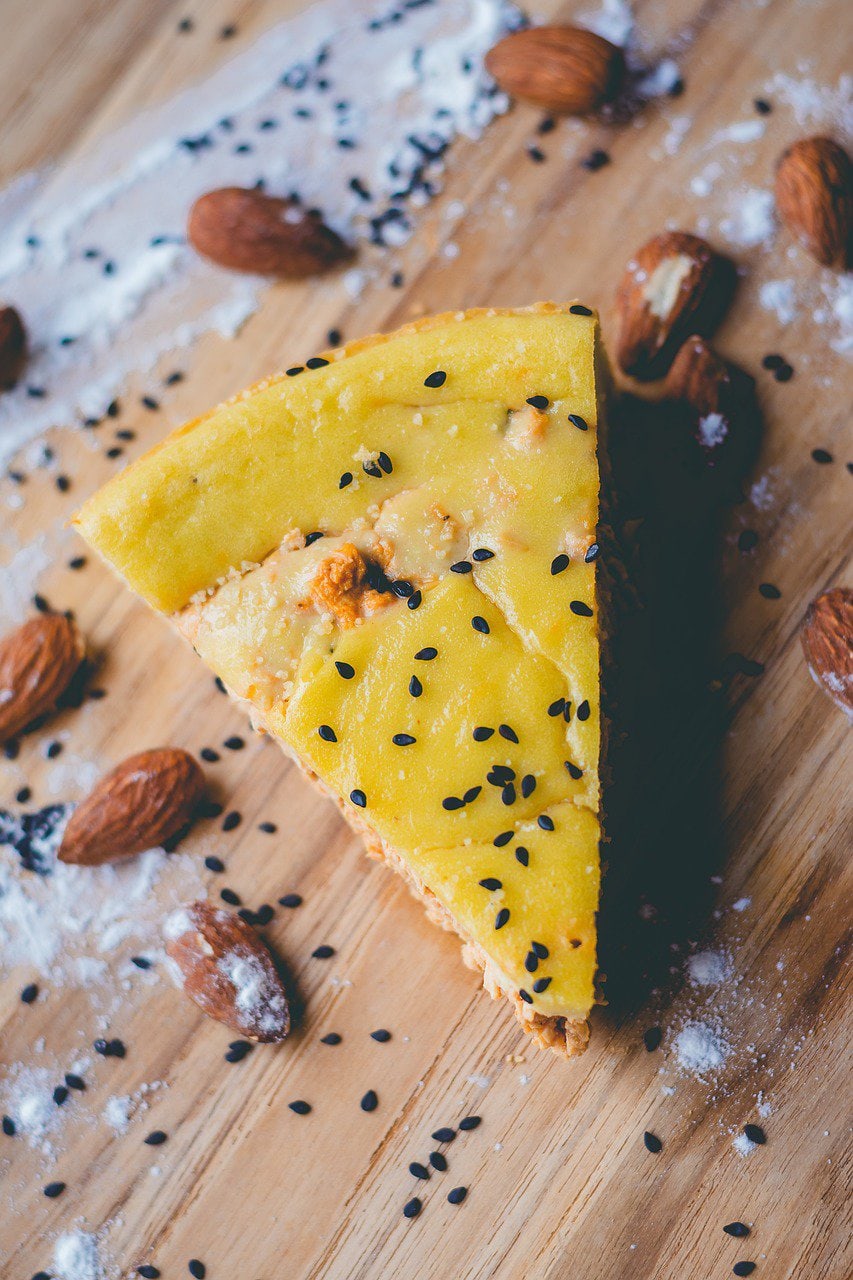
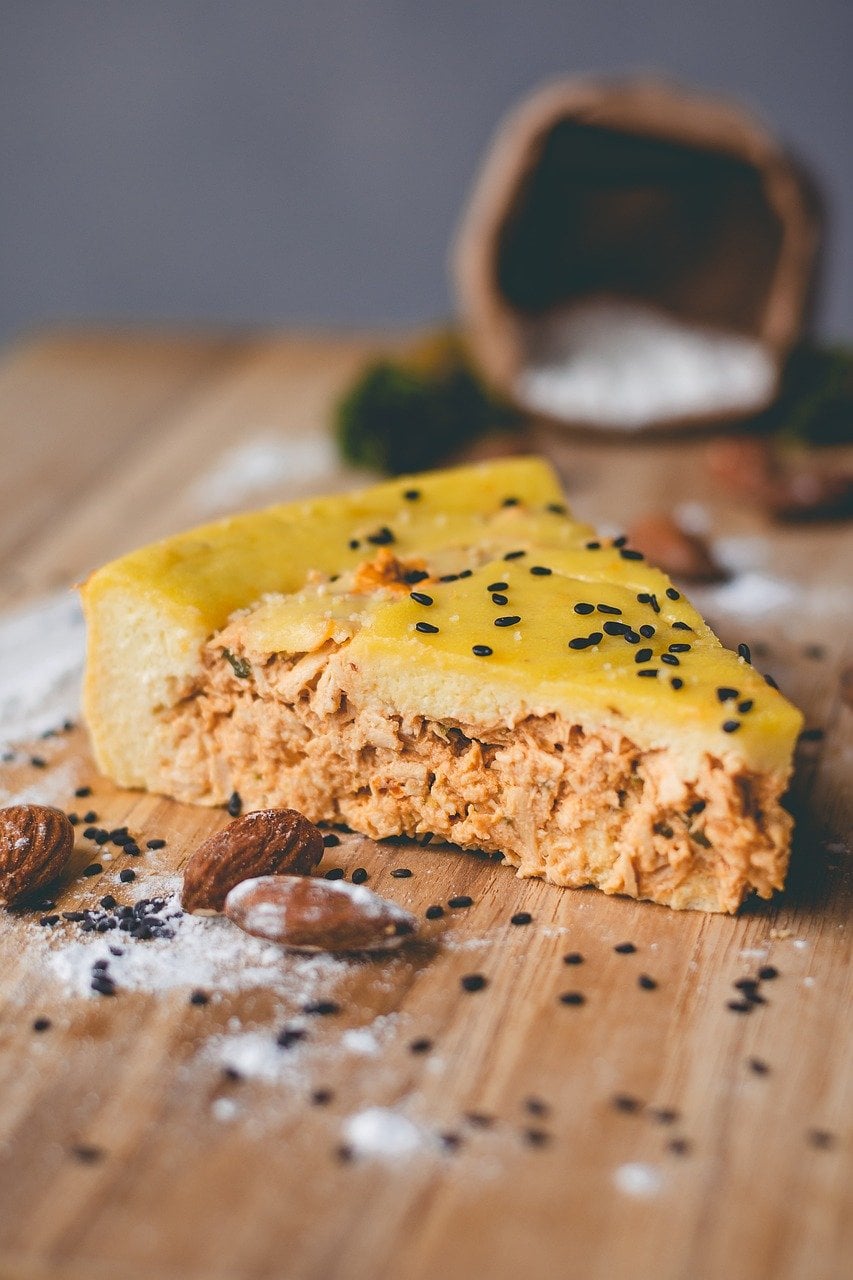
If you’re not comfortable creating your own gluten-less flour blends, there are plenty of pre-made options available for purchase. Just be sure to check the ingredients list and nutritional information to find a blend that fits your dietary needs and preferences.
Here are a few popular gluten-free cake blends specifically designed for use in cakes:
- Bob’s Red Mill Gluten-Free 1-to-1 Baking Flour: This blend is made from a combination of rice flour, tapioca starch, potato starch, and xanthan gum. It is designed to be a direct substitute for wheat-based flours in baking recipes.
- Cup4Cup Multipurpose Gluten-Free Flour: This blend uses a combination of rice flour, cornstarch, tapioca starch, milk powder, and xanthan gum to create a versatile flour that can be used in various baked goods.
- Pamela’s Products Gluten-Free Artisan Flour Blend: This blend is made from brown rice flour, potato starch, sorghum flour, and tapioca starch. It is designed to create a lighter texture in baked goods.
Experimenting with Homemade Cake Flour
One of the great things about making your own cake flour at home is that you can experiment and customize it to your liking. Here are a few ideas for adding extra flavor and nutrients to your cake flour blend:
- Add in spices: For a warm and cozy touch, mix in some cinnamon, nutmeg, or pumpkin pie spice to your cake flour blend. This is especially great for fall-inspired cakes.
- Use whole grain flours: Try subbing in some whole wheat or rye flour for a heartier and fiber-rich version of cake flour. Just be aware that using too much may result in a denser texture, so it’s best to start with a smaller ratio and adjust as needed.
- Mix in ground nuts: To boost protein and flavor, try blending some ground almonds or hazelnuts into your cake flour mixture. This works especially well for nutty-flavored cakes.
The possibilities are endless when it comes to making and baking with cake flour from scratch for a new and delectable twist!
Remember, it may take some trial and error to find the perfect blend, that doesn’t contain gluten, for your cakes. Don’t be afraid to experiment and adjust as needed to achieve the desired texture, flavor, and structure. Each blend may have a slightly different texture and flavor, so it’s important to test and find the one that works best for your personal taste preferences when the recipes call for cake flour.
Overall, having a gluten intolerance or allergy does not mean sacrificing delicious cakes and baked goods. With the variety of flour alternatives and blends without gluten available, anyone can enjoy tasty and moist cakes without compromising dietary needs. Remember to always read ingredient labels carefully and experiment with different flour combinations to find the perfect balance for your personal taste preferences. Making homemade flour for cakes or using alternative gluten-free flours in place of cake flours can open up a whole new world of possibilities in baking and can lead to delicious and unique cakes that are sure to impress. So go ahead and get creative in the kitchen – the possibilities are endless.
FAQ’s
Q: How can I make a cake without cake flour?
A: It’s quite easy to make a DIY cake flour substitute at home. All you need is all-purpose flour and cornstarch. For each cup of cake flour that is needed, measure out one cup of all-purpose flour, remove 2 tablespoons of the flour, and add two tbs of cornstarch back in.
Q: What is the difference between wheat flour and cake flour?
A: The main difference between the two is the protein content. Cake flour is a low-protein, finely milled flour- contains less gluten than wheat flour. This is why it’s usually used in delicate cakes like sponge cake. Just like all-purpose flour, it has a higher amount of protein than cake flour, which is perfect for chewy breads.
Q: I only have AP flour, can I use it to make baked goods?
A: Yes, you certainly can use AP flour to make baked goods and cakes. However, you may notice a slight difference in the texture of the cake. The protein formation in the all-purpose flour may make your cake slightly denser than if you were using cake flour. Simply adopting the method of adding two tbs of cornstarch for every cup of all-purpose flour can make it more similar to cake flour.
Q: How can I make a cake flour substitute?
A: To make a substitute, you will need one cup of all-purpose flour and 2 tbs of cornstarch. For every 1 cup of cake flour, measure out one cup of all-purpose flour, remove 2 tablespoons from it, then add 2 tbs of cornstarch. This cake flour made at home is a good substitute in recipes.
Q: Why does my recipe ask for cake flour instead of all-purpose flour?
A: Cake flour contains less protein than all-purpose flour, which means it forms less gluten. This results in a finer, lighter, and more tender crumb perfect for delicate cakes. If you’re out of cake flour, you can substitute it with all-purpose flour mixed with a little cornstarch. If you normally don’t keep a box of cake flour around, consider the substitutes you have on hand.
Q: Can I use self-rising flour instead of cake flour?
A: Yes, you can replace cake flour with one cup of self-rising flour as a replacement for cake flour. However, in this case, rest assured you won’t need to add baking powder or any additional leavening as self-rising flour already contains this ingredient.
Q: Is there a substitute for cake flour that doesn’t involve wheat?
A: Yes, potato flour is a good option for people who want a substitute for cake flour without wheat. However, keep in mind that you cannot simply swap wheat-based flour for potato flour in the same quantities. The properties of the flours are different so you should follow a recipe that specifically calls for a particular flour unless substitutes are listed.
Q: What is the specialty of cakes made with cake flour?
A: Cake flour is a low protein, finely milled flour that gives cakes a very light, delicate texture. The low protein content means less gluten is formed, providing a softer crumb perfect for delicate cakes. This kind of flour is ideal for sponge cakes and other delicate baked goods.
Q: Why does cake flour make a cake so fluffy?
A: The fluffiness of a cake made with cake flour is due to its low protein content. This results in less gluten formation when the flour is mixed with wet ingredients. This yields a softer and more tender crumb of the cake, which is why cake flour an ideal choice for fluffy, moist cakes like angel food cake.
Q: Can I bake with all-purpose flour in all my cake recipes?
A: Yes, all-purpose flour can be used in most cake recipes. However, if the recipe specifically calls for cake flour, you may need to adjust the texture by mixing all-purpose flour and 2 tablespoons of cornstarch, making sure this is added to all-purpose flour in one-cup increments. Keep in mind that these kinds of cakes might not be as delicate as those made with cake flour.
You might also be interested in…
Ready to satisfy your sweet tooth even more? Go and check out these Must Try 13 Cake in a Mug Recipes!
CONNECT WITH DAILY MOM
💖 NEWSLETTER: DAILY READS IN YOUR INBOX 💖
Sign up to receive our picks for the best things to do, see and buy so you can relax and focus on more important tasks! Let us help you be the best version of yourself you can be!
BE SOCIAL WITH US
📌 LOVE IT? PIN IT!📌
